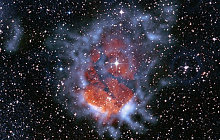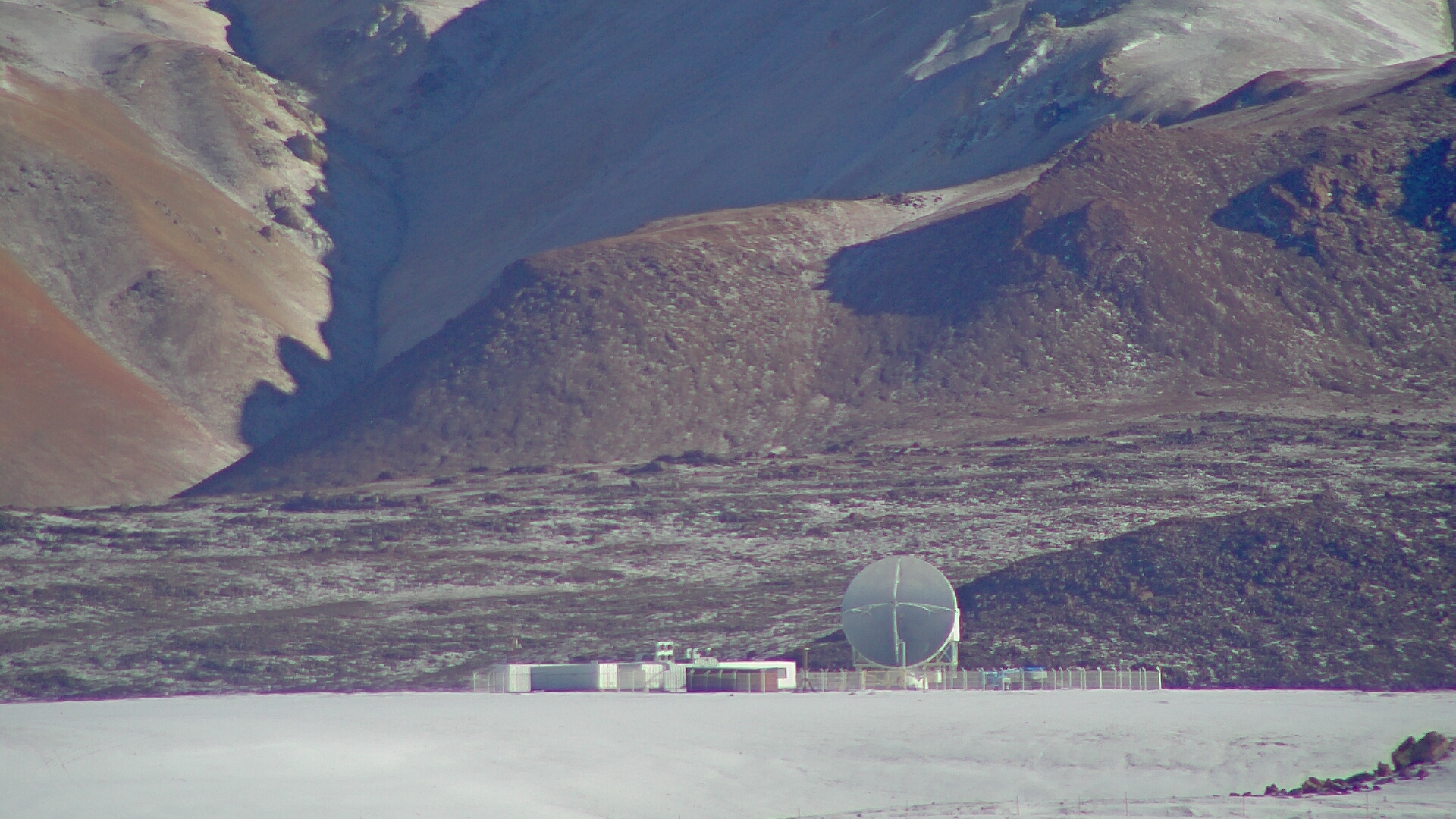APEX
Reaching new heights in submillimetre astronomy
ESO hosts the Atacama Pathfinder Experiment, APEX, and operates it on behalf of the Max Planck Institute for Radio Astronomy (MPIfR) at one of the highest observatory sites on Earth, at an elevation of 5100 metres, high on the Chajnantor plateau in Chile’s Atacama region.
APEX is a 12-metre diameter telescope, operating at millimetre and submillimetre wavelengths — between infrared light and radio waves. Submillimetre astronomy opens a window into the cold, dusty and distant Universe, but the faint signals from space are heavily absorbed by water vapour in the Earth's atmosphere. Chajnantor is an ideal location for such a telescope, as the region is one of the driest on the planet and is more than 750 m higher than the observatories on Mauna Kea, and 2400 m higher than the Very Large Telescope (VLT) on Cerro Paranal.
A Tour at the Chajnantor Plateau
|
Click on the image to take a Virtual Tour in and nearby Chajnantor. |
APEX is the largest submillimetre-wavelength telescope operating in the southern hemisphere. It has a suite of different instruments for astronomers to use in their observations, a major one being LABOCA, the Large APEX Bolometer Camera. LABOCA uses an array of extremely sensitive thermometers — known as bolometers — to detect submillimetre light. With almost 300 pixels, it is the largest such camera in the world. In order to be able to detect the tiny temperature changes caused by the faint submillimetre radiation, each of these thermometers is cooled to less than 0.3 degrees above absolute zero — a frigid minus 272.85 degrees Celsius. LABOCA's high sensitivity, together with its wide field of view (one third of the diameter of the full Moon), make it an invaluable tool for imaging the submillimetre Universe.
APEX was a pathfinder for ALMA, the Atacama Large Millimeter/submillimeter Array, a revolutionary new telescope that ESO, together with its international partners, operates on the Chajnantor plateau. APEX is based on a prototype antenna constructed for the ALMA project, and it will find many targets that ALMA will be able to study in great detail.
APEX was a collaboration between the MPIfR(55%), the Onsala Space Observatory (OSO, 13%), and ESO (32%). It is now a sole project of the MPIfR, hosted and operated by ESO on behalf of the MPIfR.
Science with the APEX Telescope
 Submillimetre astronomy is a relatively unexplored frontier in astronomy and reveals a Universe that cannot be seen in the more familiar visible or infrared light. It is ideal for studying the "cold Universe": light at these wavelengths shines from vast cold clouds in interstellar space, at temperatures only a few tens of degrees above absolute zero. Astronomers use this light to study the chemical and physical conditions in these molecular clouds — the dense regions of gas and cosmic dust where new stars are being born. Seen in visible light, these regions of the Universe are often dark and obscured due to the dust, but they shine brightly in the millimetre and submillimetre part of the spectrum. This wavelength range is also ideal for studying some of the earliest and most distant galaxies in the Universe, whose light has been redshifted into these longer wavelengths.
Submillimetre astronomy is a relatively unexplored frontier in astronomy and reveals a Universe that cannot be seen in the more familiar visible or infrared light. It is ideal for studying the "cold Universe": light at these wavelengths shines from vast cold clouds in interstellar space, at temperatures only a few tens of degrees above absolute zero. Astronomers use this light to study the chemical and physical conditions in these molecular clouds — the dense regions of gas and cosmic dust where new stars are being born. Seen in visible light, these regions of the Universe are often dark and obscured due to the dust, but they shine brightly in the millimetre and submillimetre part of the spectrum. This wavelength range is also ideal for studying some of the earliest and most distant galaxies in the Universe, whose light has been redshifted into these longer wavelengths.
Science goals
Astrochemistry, cold Universe.
More about APEX Telescope
- More interesting facts are available on the FAQs page
- More images and videos are available in the ESO multimedia archive.
- Read more on about this observatory on the APEX Handout in PDF format
- For Scientists: for more detailed information, please see the APEX telescope website
APEX Timelapse
APEX Trailer
Download this trailer in other formats from the Video archive.
APEX
|
The skies over the ESO sites in Chile are so dark that on a clear moonless night it is possible to see your shadow cast by the light of the Milky Way alone.
APEX on Google Maps



